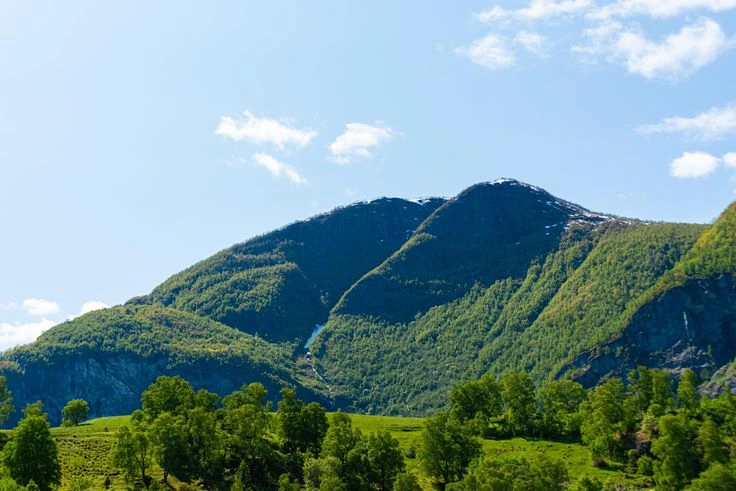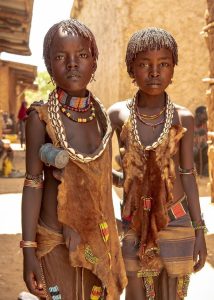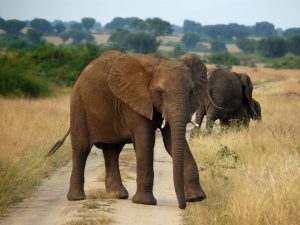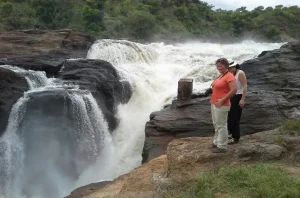Mount Karisimbi is Rwanda’s highest peak and one of the most thrilling hiking destinations in East Africa. Rising 4,507 meters above sea level, Karisimbi dominates the Virunga volcanic mountain range along the Rwanda–Democratic Republic of Congo border. The two-day trek offers hikers stunning views, diverse vegetation, and encounters with Rwanda’s rich biodiversity. Hiking Mount Karisimbi in Rwanda
Where is Mount Karisimbi located?
Mount Karisimbi lies in the Volcanoes National Park in northwestern Rwanda, within the Virunga Mountains that stretch across Rwanda, Uganda, and the Democratic Republic of Congo. It borders Mount Mikeno in Congo to the west and Mount Bisoke to the east. The mountain’s location inside Volcanoes National Park makes it part of a protected ecosystem famous for endangered mountain gorillas, golden monkeys, and rich birdlife.
How tall is Mount Karisimbi?
Mount Karisimbi stands at 4,507 meters (14,787 feet), making it the tallest volcano in the Virunga range and the highest point in Rwanda. Its name comes from the local Kinyarwanda word “amasimbi”, meaning “snow,” as its upper slopes occasionally receive snow during colder months. This impressive elevation makes Karisimbi a challenging but rewarding climb for hikers seeking an adventurous experience in Rwanda.
What makes hiking Mount Karisimbi unique?
Hiking Mount Karisimbi is unique because it combines volcanic landscapes, diverse ecosystems, and cultural significance. The trek takes hikers through bamboo forests, afro-montane vegetation, and alpine meadows, offering a variety of natural scenery. The mountain is also home to rare wildlife, including endemic birds and primates. Additionally, Karisimbi has cultural importance for local communities who view the volcanoes as sacred. This blend of natural and cultural heritage sets it apart from other hikes in East Africa.
How long does it take to hike Mount Karisimbi?
The Mount Karisimbi hike takes two days, with an overnight camp at approximately 3,700 meters. On the first day, hikers climb from the base to the campsite, which usually takes 6–7 hours depending on pace and conditions. The second day involves a steep ascent to the summit, followed by a descent back to the starting point. The full trek requires stamina and good physical fitness due to steep terrain and high altitude.
What is the difficulty level of the hike?
Hiking Mount Karisimbi is considered a strenuous trek due to its high altitude and steep slopes. While it does not require technical climbing skills, hikers need endurance and preparation for challenging conditions. The thin air at higher elevations can make breathing difficult, and weather changes rapidly. Altitude sickness is a possibility, so acclimatization is important. Travelers with prior hiking experience will find the trek demanding but manageable.
What is the best time to hike Mount Karisimbi?
The best time to hike Mount Karisimbi is during the dry seasons, which run from mid-December to February and from June to September. During these months, trails are less muddy, weather is more predictable, and visibility is clearer for panoramic views. The rainy seasons, from March to May and October to November, make trails slippery and more difficult to navigate. Planning your trek in the dry season ensures a safer and more enjoyable experience.
What permits are required to hike Mount Karisimbi?
Yes, permits are required to hike Mount Karisimbi. The Rwanda Development Board (RDB) manages Volcanoes National Park and issues hiking permits. Travelers must book in advance through RDB or licensed tour operators. The permit cost covers park entrance, guides, and ranger escorts to ensure safety. Carrying your permit on the day of the hike is mandatory, as park authorities verify registration before starting the trek.
How much does it cost to hike Mount Karisimbi?
The cost of hiking Mount Karisimbi varies depending on the tour operator and services included. Generally, permits cost around USD 400–500 per person, covering park fees and guiding services. Additional costs may include camping gear rental, porters, and meals. Many travelers book full trekking packages through local tour companies, which arrange transport, equipment, and logistics. The total price can range between USD 600–1,000 depending on inclusions.
What should you pack for hiking Mount Karisimbi?
Packing for Mount Karisimbi requires preparation for cold temperatures, high altitude, and overnight camping. Essential items include:
- Warm clothing: Layers, thermal wear, gloves, and a hat.
- Hiking boots: Waterproof and comfortable for rough terrain.
- Rain gear: A poncho or rain jacket for sudden showers.
- Sleeping bag: Rated for sub-zero temperatures.
- Headlamp: For use at the campsite and early morning ascent.
- Food and snacks: High-energy snacks for the trek.
- Water and purification tablets: Streams are available but require purification.
- Walking stick: Helps with steep climbs and descents.
Tour operators often provide tents, but confirming inclusions before booking is essential.
Do you need guides for the hike?
Yes, all hikers must trek with professional guides and armed rangers provided by the Rwanda Development Board. Independent hiking is not allowed due to safety concerns and the park’s protected status. Guides not only ensure safety but also enrich the experience by sharing knowledge about the volcano, wildlife, and vegetation. Porters are also available to carry heavy bags, making the climb more manageable.
Can you see wildlife while hiking Mount Karisimbi?
Yes, hikers may encounter wildlife during the trek. The lower slopes are home to primates such as golden monkeys and various bird species. While mountain gorillas inhabit Volcanoes National Park, they are not typically seen on the Karisimbi trail, as gorilla trekking requires separate permits and designated routes. However, hikers often enjoy spotting smaller mammals, endemic plants, and unique insects along the way.
How does altitude affect hikers on Mount Karisimbi?
Altitude is a major challenge when hiking Mount Karisimbi. The summit rises above 4,500 meters, where oxygen levels are significantly lower. Symptoms of altitude sickness can include headaches, dizziness, nausea, and fatigue. Hikers should acclimatize before attempting the trek, stay hydrated, and ascend slowly. Guides monitor hikers for symptoms and ensure safety. Those with pre-existing medical conditions should consult a doctor before the trip.
What are the camping conditions like on Mount Karisimbi?
Hikers camp overnight at around 3,700 meters in basic conditions. The campsite has limited facilities, so travelers must bring or rent equipment such as sleeping bags and mats. Temperatures at night can drop below freezing, making warm clothing and insulation essential. Although facilities are basic, camping on Karisimbi is part of the adventure, offering spectacular views of the surrounding mountains and night skies.
Can you combine Mount Karisimbi hiking with other activities in Rwanda?
Yes, many travelers combine Karisimbi hiking with other activities in Volcanoes National Park. Popular options include:
- Gorilla trekking in the nearby slopes of Mount Bisoke and Sabyinyo.
- Golden monkey tracking, which offers a shorter wildlife experience.
- Dian Fossey hike to the Karisoke Research Center ruins.
- Mount Bisoke hike, a shorter one-day alternative.
Combining activities allows travelers to maximize their time in the park and experience Rwanda’s biodiversity fully.
How do you get to Mount Karisimbi?
Travelers access Mount Karisimbi from Musanze town, about a two-hour drive from Kigali, Rwanda’s capital. Musanze is the gateway to Volcanoes National Park and has a range of lodges and hotels catering to trekkers. From Musanze, park authorities organize transfers to the trailhead. Many tour operators arrange round-trip transport from Kigali, making logistics straightforward for international visitors.
Is it safe to hike Mount Karisimbi?
Hiking Mount Karisimbi is safe when done with authorized guides and rangers. The Rwanda Development Board prioritizes visitor safety, and rangers accompany all treks. While the mountain lies near the Congo border, treks are conducted entirely on the Rwandan side under secure conditions. Travelers should follow guide instructions, pack appropriate gear, and prepare physically for the demanding trek. Hiking Mount Karisimbi in Rwanda
Conclusion
Hiking Mount Karisimbi is one of Rwanda’s most challenging and rewarding adventures. The two-day trek offers stunning landscapes, rare wildlife encounters, and the achievement of standing at Rwanda’s highest point. With proper preparation, permits, and guidance, the experience is safe and unforgettable. Whether combined with gorilla trekking or enjoyed on its own, Mount Karisimbi remains a must-do for adventurous travelers exploring Rwanda. Hiking Mount Karisimbi in Rwanda




